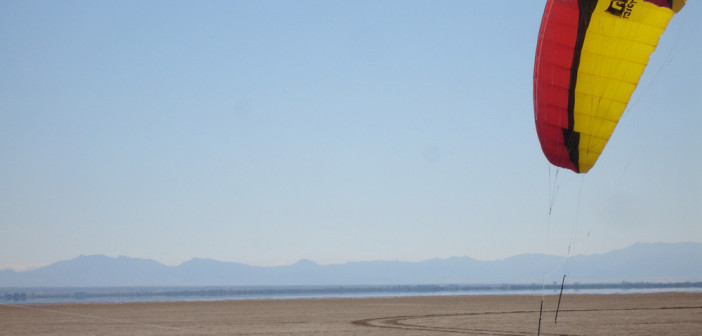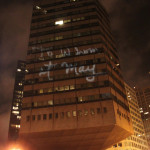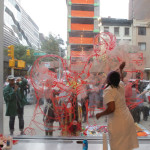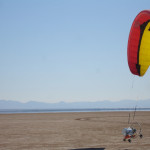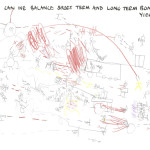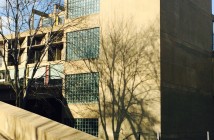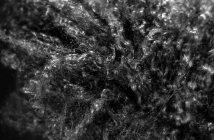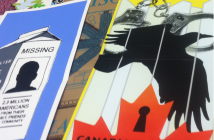The Living as Form exhibition is a landmark survey of a diffuse set of socially-engaged art practices that have steadily been gaining momentum since the 1990s. Originally produced in 2011 by the New York-based public art agency Creative Time and organized by curator Nato Thompson, the exhibition has now traveled to Cambridge, via hard-drive, to appear at Harvard’s Carpenter Center for the Arts. Living as Form: Nomadic Version is an abbreviated rendition of the original juggernaut with the addition of projects created by local artists. The two floors of the exhibition, featuring over twenty artists and guest curated by Claire Grace, include everything from media interventions to participatory experiences to spatial occupations. The projects on display range from the patently activist—photographs of the United States Social Forum and WikiLeaks—to the stranger and more suggestive, leaving viewers to decide for themselves where these projects might fall on the spectrum between political utility and symbolic statement.
The genre of social practice art has its roots in such twentieth century avant-garde movements as situationism, happenings, and social sculpture, and has give rise to a proliferation of labels: new genre public art, relational aesthetics, interventionist, collaborative, or participatory art. In any event, one thing is clear: at some point in the middle of the last century, the ontological category of "art" burst from its conceptual and physical frame. The social was taken up as aesthetic material. Shattered were the disciplines historical complicity with the material and the representational to commandeer that realm of experience known as "everyday life." Living was now form.
As in any survey, the aim of Living as Form is not so much depth as breadth — the exhibit is assembling the ammunition to christen a movement for the history books (a full archive of work can be found on Creative Time’s website). To be sure, this expansive approach can have a flattening effect -- leveling the not insignificant differences between, say, the Tahrir Square protests and an eccentric Providence monthly that once explored at length the topic of foam. But the purpose, as Thompson has said, is to draw parallels, or "lines of affinity," among diverse forms of cultural resistance. The exhibit works to build a language around an emergent type of aesthetic practice, an art which aspires to reimagine social spaces and relations to enact an ideal of civic life, leveraging cultural strategies to effect change.
The pulse of the exhibit is a bright, clamorous, countercultural ethos. Local contributions include the Design Studio for Social Intervention’s Public Kitchen, and the New Crafts Artists in Action, a group that knits nets for basketball hoops to draw attention to neglected urban spaces. Tomashi Jackson paints portraits of often-invisible workers on window panes; John Hulsey projects the laments of predatory loan victims in ethereal light displays on Boston’s Bank of America building, that emblem of corporate industry and greed. Caitlin Berrigan’s performative installation asks viewers to feed their pressing financial questions to a pneumatic tubes, to be answered by "experts" on the other side of a partition who turn out to be children. The Providence feminist space Dirt Palace has installed a giant plywood wall emblazoned with the names of its members, past and present. Through peepholes in the wall, viewers can gaze upon a variety of projects produced by the collective over the years, from paper-mache animals to experimental video art.
The art exposes the ultimate elasticity of space in the face of the creative imagination, and how its social, physical, and emotive properties can be reinterpreted to create new ways of being with others. Other projects from around the world include transforming an abandoned train station into a makeshift hotel, occupying a Tehran house slated for demolition, putting collected public grievances to music and then singing them as a choir, staging theatrical productions with the impoverished, having children administer free haircuts, delivering illegal abortions on ships in international waters, and painting an entire Puerto Rican village shades of green to match the surrounding mountains. Here, the artist’s raw material is not paint or clay but forms of public life—as found in the marketplace, the prison, the public park, or the hair salon, to name a few examples.
The challenge, of course, in reviewing such artworks is that we often only experience them (with the exception of Berrigan’s piece, at fixed times) in some second-hand form or another—through artist lectures, video documentation, photographs, press releases, or publications—that constitute a kind of Platonic ideal of the piece. Often, photographic documents are presented as direct and unmediated reflections of the work rather than as a select and curated view. In other words, the exhibition of the work may be the clearest articulation of the work’s intent—and, sometimes, its creator’s own wishful thinking—yet this rhetoric is not always continuous with reality. "Site-specific and event-driven, the projects in Living as Form: Nomadic Version resist display," Thompson writes in his curatorial statement, adding that the works "remain a pale shadow of the original action."
It begs the question: what happens to social practice art once boxed in by gallery walls, a global, mass media phenomenon? This issue of re-representation is worth examining, particularly as social practice becomes increasingly institutionalized (so much so that at Creative Time’s annual summit last year, the artist Rick Lowe asked, "Is social practice art gentrifying community arts?"). And as the genre has gained mainstream acceptance, so its detractors have grown more vehement. Some go so far as to deem our current moment "post-participation."
As these practices have become more widespread, perhaps more rigorous methodologies for documenting and writing about them are necessary. Because when the discourse around art has evolved and taken shape from the idea of the artwork as a singular, viewable phenomenon fixed in time and space, we confront a poverty of critical language to describe what actually happens when people inhabit a derelict house, play basketball with colorful knitted nets, or eat a garden-sourced dinner together. We need more finely nuanced and textured accounts of the public sphere and the interventions made within it--beyond the all-too-standard "a dialogue took place." What was actually said? audiences are left to wonder. And we suffer, too, from a glut of interrelated terms whose meanings are far from simple or distinct: civic, public, social, community, art, politics, culture.
Already, social practice art is the subject of robust debate. Is this art, and, if so, what makes it good? How do we judge it, and what effects is it supposed to have on the world? Where do its ethical responsibilities lie? How does the label "art" make these social actions possible and how does it constrain them? Of course, these questions about art, ethics, and society that have long haunted the field of aesthetics—Plato famously banned the arts from his utopian state—but no more so than in the genre of social practice, where the distance between symbol and action has been radically attenuated. So now that the movement has been named; now that a comprehensive exhibition has been mounted and is now traveling the world—what’s next?

